How Tariffs, AI, and Robots Will Reshape Industry and Humanity
Tariffs are breaking old trade ties. AI and robots are rewriting the rules. The U.S.–China split is just the beginning of a new world map drawn in algorithms, not alliances.
While game-playing the future, one of the main flashpoints we came across, where the global conflict can start, was the Arctic. We look at it in complete detail.


Constantinople. The bridge between Europe and Asia. The gatekeeper of the Bosporus.
Under the Byzantine Empire, it thrived. Strategically vital, yet untouched by the flames of war. Until the Fourth Crusade.
The Crusaders marched, but not to Jerusalem. Political intrigue and Venetian greed changed their course. Constantinople became their prey.
In 1204, the unthinkable happened. Crusaders sacked the city. A jewel shattered. An empire fragmented.
The Byzantine defenses crumbled. The Ottomans waited. And when the time came, they surged into Europe.
Constantinople’s importance was always there. But its fall made the world see it. Painfully, irrevocably.
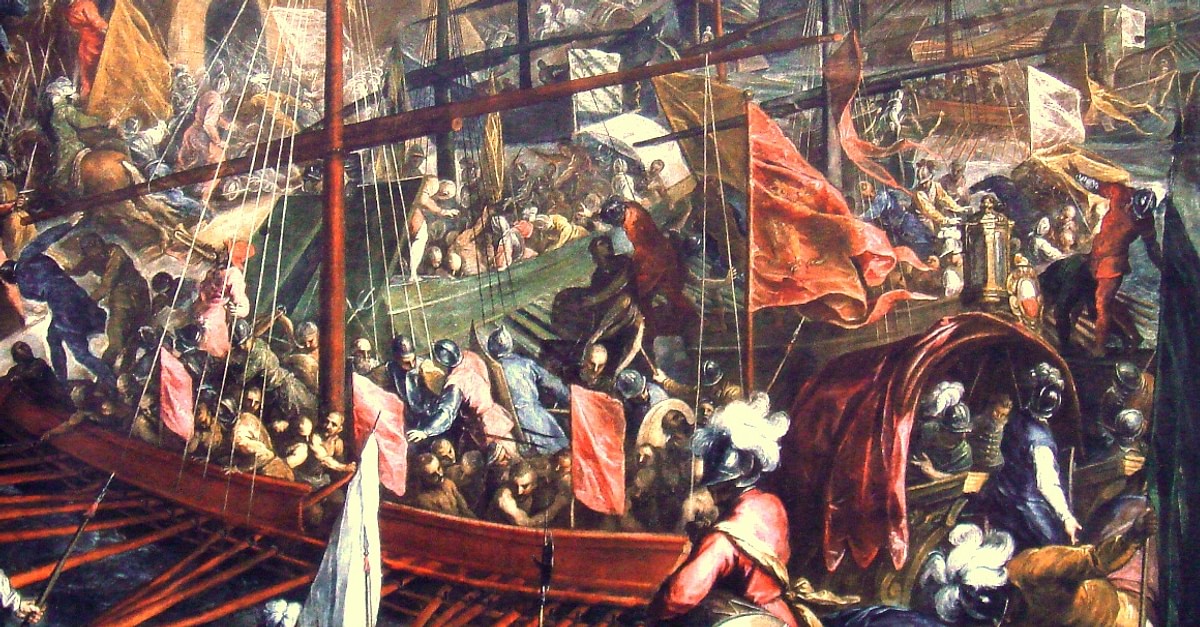
What we do takes a lot of work. So, if you like our content and value the work that we are doing, please do consider contributing to our expenses. Choose the USD equivalent amount in your own currency you are comfortable with. You can use PayPal or Stripe to make your payment.
The Arctic froze in more ways than one.
A disputed shipping route turned into a battlefield of nerves.
Russian naval forces squared off against NATO-aligned ships. Norway’s Arctic patrol fleet held its ground.
Then it happened.
What?
We will pick this story up later.
Let us first understand and appreciate the context.
We started discussing that the real reason for the Ukraine war was the Arctic Circle.
Little had we realized the real significance of that area and how it is central to the new geopolitical struggles that the world is witnessing in the current era.
Today we will go into complete detail about this conflict-ready area
Check this map and see where things fit together in terms of geography.
The important areas are the Arctic Ocean as it paves the way to the Greenland Sea on one side and Barents and then Norwegian Seas on the other merging then into the North Atlantic Ocean.
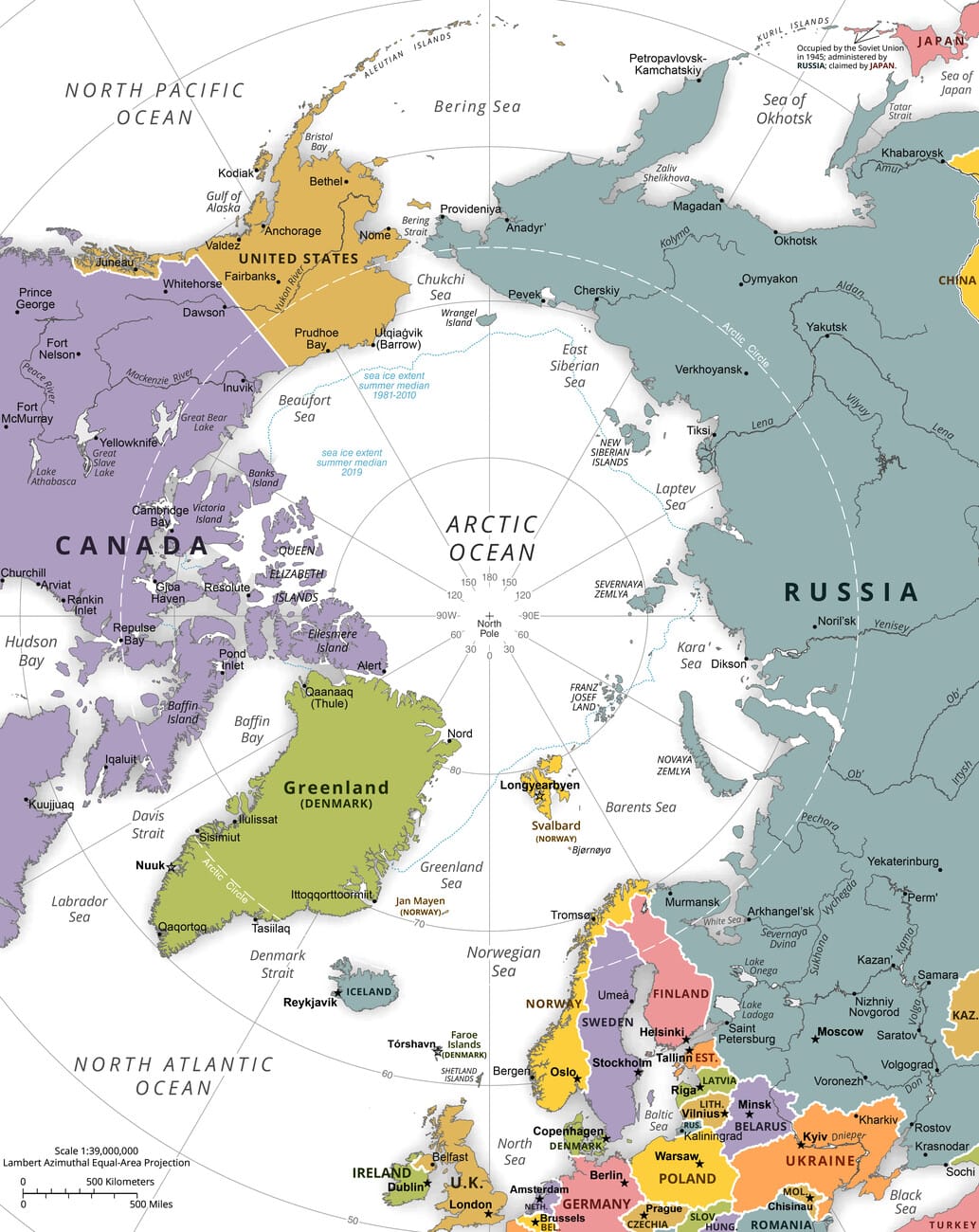
North Atlantic and the Arctic are inextricably linked.
The Arctic. Smallest and shallowest of oceans. Yet surrounded by the largest and most dominant global powers.
Among Arctic nations, Russia, Canada, and the US stand apart. Why? Their continental shelves span three oceans: the Pacific, the Arctic, and the Atlantic.
Russia and Canada hold territorial stakes in the Arctic. Potential sea lanes cut through their domains. But sovereignty over these passages remains a battleground. Both nations stand firm against US claims.
Russia is the outlier.
At this point, it is the lone non-NATO Arctic neighbor. And it has a unique position: Mighty military capacities, facing and bringing along immense challenges. The US, on the other hand, commands Arctic alliances. Most states are aligned with Washington. But Russia owns the largest Arctic territory—a vast expanse.
The Northern Sea Route (NSR) is Russia's crown jewel.
Stretching along its Arctic coast. Russia claims it as its historic waters. The US counters—calling it an international waterway.
The Arctic has always been a theater of US-Russia rivalry. From the early days. To now. Its icy waters carry the weight of power, sovereignty, and global strategy.
Those icy waters are shrinking. And with them the earlier barriers that stopped the powers from exerting themselves.

As the world in the Indian Ocean and the adjoining Red Sea areas gets complex with pirates and conflicts originating in West Asia (or the Middle East), supply chains are being impacted. Severely.
Traffic via the Panama Canal has come down 30% in FY2024.

So you see global shipping lanes are under intense pressure, forcing the world to rethink maritime trade routes.
Because of this, the obvious question is being asked - Are we there yet?
There - as in - a new option that looms on the horizon: the Arctic trade routes. These routes, including the Northern Sea Route (NSR), the North-West Passage (NWP), and the Transpolar Sea Route (TSR), promise to cut shipping distances by up to 40% compared to the Suez Canal.
SHIPPING LANES are under pressure. Seven of the world’s ten biggest shipping companies have suspended transit through the Red Sea, where the Houthis, a Yemeni rebel group, are attacking commercial vessels. As a result far fewer ships are using the Suez Canal, a shortcut from the Indian Ocean to the Mediterranean Sea. The volume of trade passing through the Panama Canal, which connects the Atlantic and Pacific Oceans, has declined by 30% since November, after severe drought hit its reservoirs, lowering the water level. The spot rate for sending a 40-foot container from China to northern Europe has risen by 283% since early-December, according to figures from Freightos, an online freight marketplace. There is a tantalising alternative for long-distance sea trade: a series of routes that could cut up to 40% off the length of journeys made via the Suez Canal. But there is a catch: the Northern Sea Route (NSR), North-West Passage (NWP) and Transpolar Sea Route (TSR) cross an ocean covered in ice. Could the Arctic be a viable option for commercial shipping? (Source: "How viable is Arctic shipping?" / The Economist)
The Arctic, long considered inaccessible for commercial shipping, is gaining renewed attention.
Two key factors drive this shift:
The tension and the underlying geopolitical games became even more apparent after February 2022, when Russia attacked Ukraine.
In the months that followed, the Arctic's balance shifted.
The Arctic Council froze its work with Russia. Silence replaced diplomacy.
Sweden and Finland shattered decades of neutrality. Their petitions to join NATO spoke volumes.
By April 2023, Finland stood as NATO’s newest member. Sweden followed in March 2024.
Seven of the eight Arctic states now stand under NATO’s banner. Russia, the lone outsider.
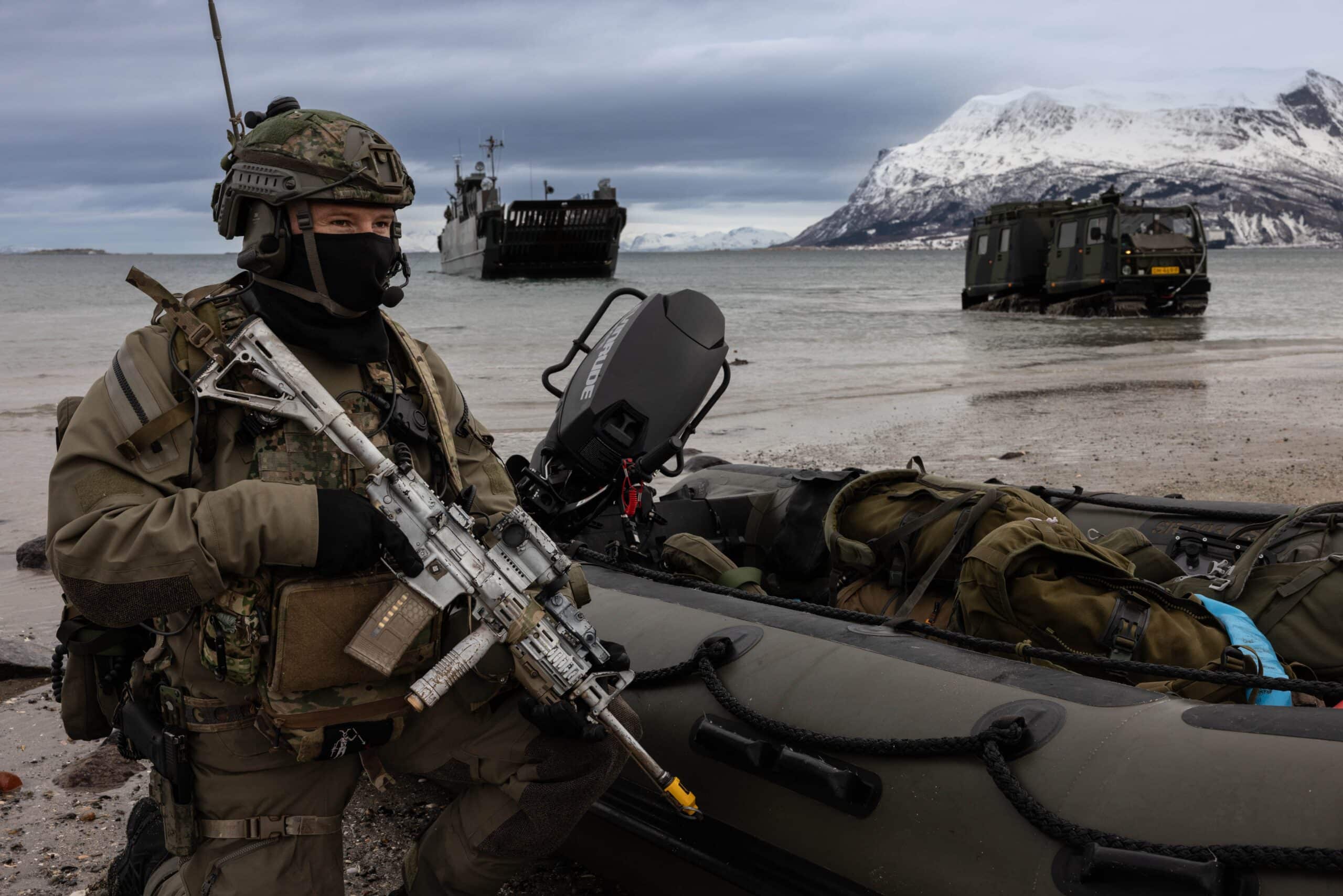
The catch is that Russia has been working on the area since the Cold War era but under Putin has gained renewed vigor.
To get a context - let us understand the importance of the Arctic for Russia.
Russia has the longest Arctic coastline among all the region’s states. The region’s contribution to Russia’s GDP is pegged between 12 to 15 percent, and accounts for almost 20 percent of the country’s exports, including 80 percent of Russian gas and 17 percent of its oil. (Source: Russia and the Future of the Arctic / ORF)
This substantial energy production contributes significantly to the national economy, with the Arctic accounting for about 10% of Russia's Gross Domestic Product (GDP) and 20% of its exports. (Source: Russia’s Reimagined Arctic in the Age of Geopolitical Competition / Journal of Indo-Pacific Affairs)
So you see it's critical to Russia for its economy.
Over the years every conflict has factored into the rising tensions in the Arctic.
Baltics and Balkans Enlargement (2004, 2009):
NATO's inclusion of Baltic states (Estonia, Latvia, and Lithuania) and Balkan nations such as Albania and Croatia brought the alliance closer to Russia’s borders. It was a direct challenge to Russia in the Arctic. Although these nations are not Arctic states, their integration into NATO enhanced the alliance's ability to coordinate military operations in regions adjoining the Arctic, potentially encircling Russia. The ripple effects are seen in NATO's increasing Arctic-focused exercises and alliances with Arctic nations like Norway and Iceland.
Invasion of Georgia (2008):
Russia’s military intervention in Georgia marked a turning point in its foreign policy. While the Arctic was not directly involved, this aggression hinted at Russia's broader ambitions, including Arctic militarization.
Intervention in Syria (2015):
Russia's military campaign in Syria expanded its global military reach. It showcased its ability to project power far beyond its borders. It was taken as Russia's ability and willingness to dominate the Arctic territories.
Annexation of Crimea (2014):
The annexation of Ukraine's Crimea peninsula was a watershed moment. It not only impacted European calculations but also shifted Arctic dynamics. When Russia was sanctioned, those sanctions forced Moscow to double down on Arctic resource development and military buildup, seeking to insulate itself from global energy markets and maintain economic stability.
Some American commentators have been criticizing the lack of preparedness in the Arctic by the US and NATO. Per them, a coherent U.S. national security strategy for the Arctic has been missing. They think that the Pentagon may have long overlooked this icy frontier.
The Obama administration took some steps. Chairing the Arctic Council. Allocating funds for icebreakers.
But these efforts may have fallen short. The Arctic’s strategic importance demands far more.
Let's look at things in 2017. Here is what Sen. Dan Sullivan (R-Alaska) had shared in the journal "Foreign Policy".

He had an illustration as well.
Check the bases that NATO has vs those that Russia has.

The Northern Sea Route (NSR) plays a crucial role in Russia's economic strategy; however, infrastructure development faces significant challenges due to high costs and a reliance on foreign investment. Additionally, Russia's nationalist policies restrict foreign involvement in Arctic initiatives. The bases created by Russia ensure that the entire Northern Sea Route is lined by Russian military bases.

Let us go deeper into the Russian Arctic installations. Here is a detailed map showing each and every military base along the Arctic.

Let us look at each and every one of these locations in some detail.
Vidyayevo:
Luostari/Pechanga:
Olenya:
Alakurtti:
Severodvinsk:
Arkhangelsk:
Gremikha:
Nadym:
Naryan-Mar:
Gadshiyevo:
Severomorsk:
Nagurskoye:
Ostrov Sredny:
Alykel:
Vorkuta:
Amderma:
Tiksi:
Temp:
Pevek:
Zyvozdny:
Providenya:
Anadyr Ugolny:
Mys Shmidta:
The Russian Arctic Military and strategic installations represent a cornerstone of Russia’s defense and geopolitical strategy, reflecting its intent to dominate the Arctic region and project power into the Atlantic. These bases—spanning air, naval, and radar facilities—underscore Russia's preparedness to secure its vast Arctic territories, protect key economic assets, and assert control over critical maritime routes opened by melting ice.
The infrastructure supports a layered defense mechanism, ensuring Russia’s ability to detect, deter, and respond to threats in one of the world’s harshest environments. Key installations like Severomorsk and Severodvinsk strengthen the Northern Fleet's capabilities, particularly in deploying nuclear submarines and safeguarding Arctic shipping lanes.
This network also enhances Russia's power projection into the Atlantic and supports its Arctic ambitions by facilitating long-range aviation, radar surveillance, and missile deployments. Together, they cement Russia’s position as a dominant Arctic and global military force.
As this German think-tank discusses - Russian Arctic policy (as is evident in its military installations)is part of its economic and political framework of influence in Europe and beyond.

What does all this mean?
The Arctic and North Atlantic regions are now arenas of strategic confrontation as Russia accelerates its military buildup and power projection. The threats emanating from Russia’s capabilities in the Norwegian Sea, Barents Sea, and the North Atlantic represent an existential challenge to NATO’s security architecture.
The Northern Fleet, stationed in the Barents Sea, is the linchpin of Russia's naval dominance in the Arctic. Its capabilities are nothing short of formidable:
No NATO member state has ice-strengthened ships with both anti-aircraft and anti-submarine capabilities. The United States, Canada, Denmark, Finland, and Sweden have prioritized capabilities designed for other theaters, such as the Indo-Pacific and the Baltic Sea regions. Iceland, which has no standing army, only operates coast guard vessels. Norway has ice-strengthened coast guard vessels, but they are not designed for military operations. Russia’s nuclear submarines, which are capable of launching an attack on North America, can travel from the Barents Sea through the Bear Gap between Scandinavia and Svalbard, Norway, and under the ice along the coast of eastern Greenland without being detected. This leaves big gaps in NATO’s defense posture. Russia’s war in Ukraine also gives it incentives to work with China in the Arctic, including joint naval exercises and coast guard cooperation. (Source: NATO Is Unprepared for Russia’s Arctic Threats / Foreign Policy)
The Barents Sea serves as the inner zone of Russia's "bastion defense" concept, where Russia aims to maintain sea control. This region provides Russia's strategic nuclear submarines with ice-free ports and access to the Atlantic and Arctic Oceans.

This formidable combination of offense and defense gives Russia a significant upper hand in the Arctic and adjacent regions, posing a persistent challenge to NATO’s strategic interests.
In recent years, Russia’s focus on the Arctic has grown exponentially:
Russia’s 2022 naval doctrine raised the Arctic region to the highest priority. Between its invasion of Crimea in 2014 and 2019, Russia built more than 475 military facilities in the Arctic. Its Northern Fleet, located in the Barents Sea, accounts for around two-thirds of the Russian Navy’s nuclear strike capabilities. A multilayered network of sensors, missile systems, coastal defense systems, and electronic warfare technology protects these capabilities, including the strategic submarines. (Source: NATO Is Unprepared for Russia’s Arctic Threats / Foreign Policy)
After the attack on Ukraine, observing disturbing moves around Svalbard, Norwegians became increasingly concerned that Russian forces would occupy the strategic archipelago. This is especially true as there is excellent room for manoeuvre for the Russian side. This originates in key differences in the interpretation of the Spitsbergen Treaty signed in 1920. Under its terms, Russia has the right to develop economic activities in the archipelago’s territories. The Norwegians consider this right to apply only to the islands and territorial waters, while the Russians also include the 200 nautical miles from the coastline around Svalbard. According to the Kremlin, the archipelago is a demilitarized area. The Norwegian authorities argue that although treaty provisions exclude the possibility of a permanent military presence, e.g. in the form of military bases, they do allow Norwegian soldiers to be present there or for military aircraft to land. The archipelago, which is under the jurisdiction of a NATO member state, seems to be an ideal place for Russia to conduct provocative actions against the largest defence alliance in the world. (Source: Norway on the front line of tensions with Russia / New Eastern Europe)
These developments underscore Russia's ambition to dominate Arctic shipping routes and secure its access to vital resources while maintaining a deterrent posture against NATO. The Norwegian Sea and North Atlantic—critical lifelines for NATO's maritime strategy—are now at heightened risk.
It has been discussed how experts in the West have been warning that US has lacked a coherent and cogent Arctic Strategy. Well, Pentagon's 2024 Arctic Strategy was important because it signals a decisive shift in U.S. and NATO policy.
The Pentagon’s latest Arctic strategy isn't just a document; it’s a declaration. Aimed at countering Russia’s expanding footprint, the strategy calls for a robust military presence and enhanced intelligence capabilities to pierce through Russia’s Arctic stronghold. The U.S. now recognizes the Arctic not as a distant theatre but as a critical battlefield for global power dynamics.
Recently, the U.S. Navy has ventured into the icy waters of the Barents Sea. For the first time since Russia launched its full-scale invasion of Ukraine in 2022, two Arleigh Burke-class destroyers of the U.S. Navy have ventured into the Barents Sea, a move heavy with strategic implications. The USS Jason Dunham and USS Stout, formidable symbols of American naval power, have entered this icy theater as part of a calculated operation. Meanwhile, the Harry S. Truman Carrier Strike Group, to which they are attached, continues to operate just south of Norway, maintaining a commanding presence in the region.
The USS Jason Dunham and USS Stout are part of the Harry S. Truman Carrier Strike Group currently operating further south outside Norway. Although the U.S. Naval Forces Europe in a press-release Wednesday evening tells that this is a “route maritime operates in the Barents Sea”, facts are different. US surface warships have stayed away from these waters after Russia launched its full-scale war on Ukraine. The Barents Sea north of the Kola Peninsula are highly sensitive for the Russian nuclear-armed submarine fleet. US Navy has not been operating the Arleigh Burke class guided-missile destroyers in the Barents Sea since a joint voyage with the British Navy in 2020. The US navy is not telling how far east in the Barents Sea the two warships sailed. (Source: US warships sailed into the Barents Sea / The Barents Observer)
These maneuvers are a direct message to Moscow: the Arctic is no longer an uncontested domain.
NATO has stepped up its game with exercises like Steadfast Defender 2024, which for the first time, incorporated Arctic-specific components into its war games.
Exercise Nordic Response 2024: A large-scale exercise that took place on March 9–10, 2024. This exercise focused on high-end amphibious operations, such as beach landings in Norway. The exercise was designed to strengthen collaboration between Nordic countries and their allies.
NATO recently launched Exercise Steadfast Defender 24, the largest Arctic drills since the Reforger Exercise in 1988. One component, Exercise Nordic Response 2024, focused on high-end amphibious operations, including beach landings on Norwegian shores. These exercises aim to reaffirm joint doctrine and ensure successful operations in the Arctic’s harsh environment. They establish tailored Arctic tactics while reinforcing safety of personnel. (Source: Cold, But Not War: How the U.S. and NATO Can Anchor the Arctic / US Naval Institute)
These large-scale drills involved coordinated operations across land, sea, and air, simulating potential Arctic conflict scenarios. The message to Russia is clear—NATO is prepared to meet aggression in the Arctic with overwhelming force.
Reinforcement of Alliance defense: The first part of the exercise focused on reinforcing Alliance defense at sea, in the Arctic, and across the Atlantic.
The exercise is divided into two parts. The first focuses on the reinforcement of Alliance defence at sea, across the Atlantic and in the Arctic, including amphibious assaults, under the leadership of NATO's Joint Force Command Norfolk. The second half, led by NATO's Joint Force Command Brunssum, focuses on the use of NATO and Allied deployed reinforcements across all domains, from the Arctic to the Eastern Flank. (Source: NCI Agency supports NATO's largest military exercise since the Cold War / NATO Communications and Information Agency)
So, if we see closely, we can see that Steadfast Defender 2024 was not just NATO's largest military exercise since the Reforger Exercise in 1988, but it was meant to project its power into the Arctic. Some important objectives seem to be:
We have discussed the exercises and action in the Arctic side, specifically the Nordic countries.
Now, let us look at another key area that is missed out by many analysts in the NATO vs Russia Arctic puzzle: Scotland.
Scotland’s strategic geography and military infrastructure place it at the heart of NATO’s defense and security framework in the North Atlantic and High North.
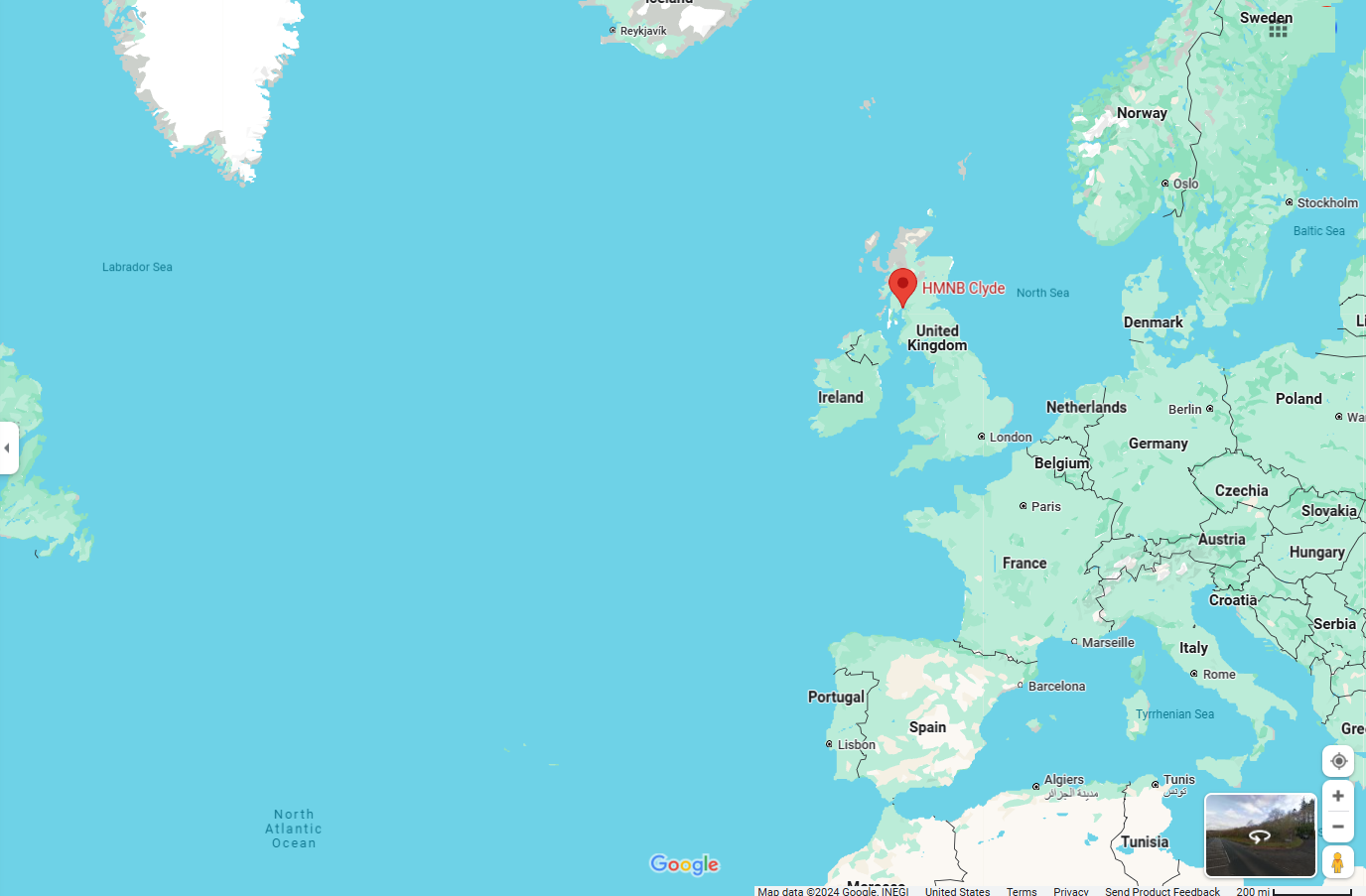
Its location serves as a critical gateway between the Arctic and Atlantic, making it indispensable for monitoring and securing key maritime routes against evolving threats.
Scotland’s proximity to the GIUK Gap (Greenland, Iceland, UK)—a chokepoint for monitoring Russian naval activity in the North Atlantic—makes it a cornerstone of NATO’s anti-submarine warfare strategy. Its military infrastructure is critical for ensuring NATO’s dominance in the Arctic and North Atlantic, especially as these regions become hotspots of geopolitical competition.
Scotland has two critical military installations: RAF Lossiemouth and HM Naval Base Clyde (Faslane). These bases are not only vital to the UK’s defense strategy but also serve as key assets for NATO’s collective security framework.
RAF Lossiemouth
It is situated on the Moray Firth in northeastern Scotland and is one of the UK’s premier air defense and maritime patrol hubs.
Its main Capabilities:
NATO Integration: Recently upgraded to accommodate U.S. Navy P-8 Poseidon aircraft, enhancing interoperability with NATO allies for joint maritime and air operations.

Strategic Importance: Positioned to monitor and protect critical sea lanes in the North Atlantic, RAF Lossiemouth is a frontline defense against submarine threats in the GIUK Gap (Greenland-Iceland-UK corridor).
HM Naval Base Clyde (Faslane)
It is on the west coast of Scotland along the Gare Loch, near Glasgow and is the home of the UK’s Continuous At Sea Deterrent (CASD), ensuring 24/7 operational nuclear deterrence.
Capabilities:
His Majesty's Naval Base (HMNB) Clyde commonly known throughout the Navy as Faslane is the Royal Navy's main presence in Scotland. It is home to the core of the Submarine Service, including the nation's nuclear deterrent, and the new generation of hunter-killer submarines. More than 6,500 civilians and Service personnel are employed on the site. HMNB Clyde provides a base port to the ships and submarines of the Faslane Flotilla (FASFLOT) and supports dozens of other visiting vessels each year. (Source: Clyde Naval Base - Faslane / Office for Nuclear Regulation)
Strategic Role: Faslane ensures the UK’s ability to project power and defend its northern maritime approaches, bolstering NATO’s posture in the region. It is also undergoing enhancements to support future submarine classes, reflecting its long-term strategic importance.
Based on the above information, Scotland serves 4 major purposes:
But there is a kink.
Scots want their independence from the United Kingdom and have Scotland once again as a sovereign state.
Scotland’s fight for independence is centuries old. Once a proud kingdom, it merged with England in 1707 to form Great Britain. But the dream of self-rule never died.
The push gained momentum in the 19th century. By 2007, the Scottish National Party (SNP) led the devolved parliament. In 2014, a referendum came close—44.7% voted for independence. But staying in the UK won by a narrow margin.

Then came Brexit. Scotland, overwhelmingly pro-EU, was forced out. The anger reignited the movement. Yet in 2022, the UK Supreme Court blocked another referendum. Scotland was told to wait. Again.

Today, the polls remain tight. Nearly half of Scots still want independence. But the SNP is losing ground—48 seats in 2019 shrunk to just 9 by 2024. The British media declared that Scottish independence was no longer important.

The struggle continues. The question isn’t whether Scotland will rise again. The question is when.
You see it's not just the Brits who are antagonistic to the Scottish independence. Even NATO minces no words.

NATO has no "bandwidth" for Scottish independence.
Can you imagine - a Washington think-tank director dictating Scotland’s right to self-determination? Interesting, isn't it?
As for NATO, it has no patience for the Scottish independence because with it comes the demand for closing Faslane.
For Sweden and Finland however, it has the time and the inclination.
Different story.
Strategic interests. Geopolitical stakes. That’s the game.
So you see how the Arctic and North Atlantic geopolitics is working?
Now, let us bring in China. After all, it won't be far behind.
China has declared itself a "near-Arctic state" and an "active participant, builder, and contributor in Arctic affairs." In 2018, China released a white paper outlining its Arctic policy and goals.

China has deepened its Arctic partnership with Russia, particularly after Western sanctions isolated Moscow in 2014. This collaboration is evident in significant Chinese investments, such as the Yamal LNG project, showcasing Beijing's expanding economic footprint in the Russian Arctic.
The United States sees China as a potential destabilizing force in the region, with growing concerns over its dual-use strategies—leveraging commercial and scientific access for potential military purposes. Recent joint military activities with Russia have heightened these fears. In July 2024, joint bomber patrols near Alaska and the presence of Chinese naval vessels in the Bering Sea sent a clear signal of Beijing’s increasing assertiveness in the Arctic.
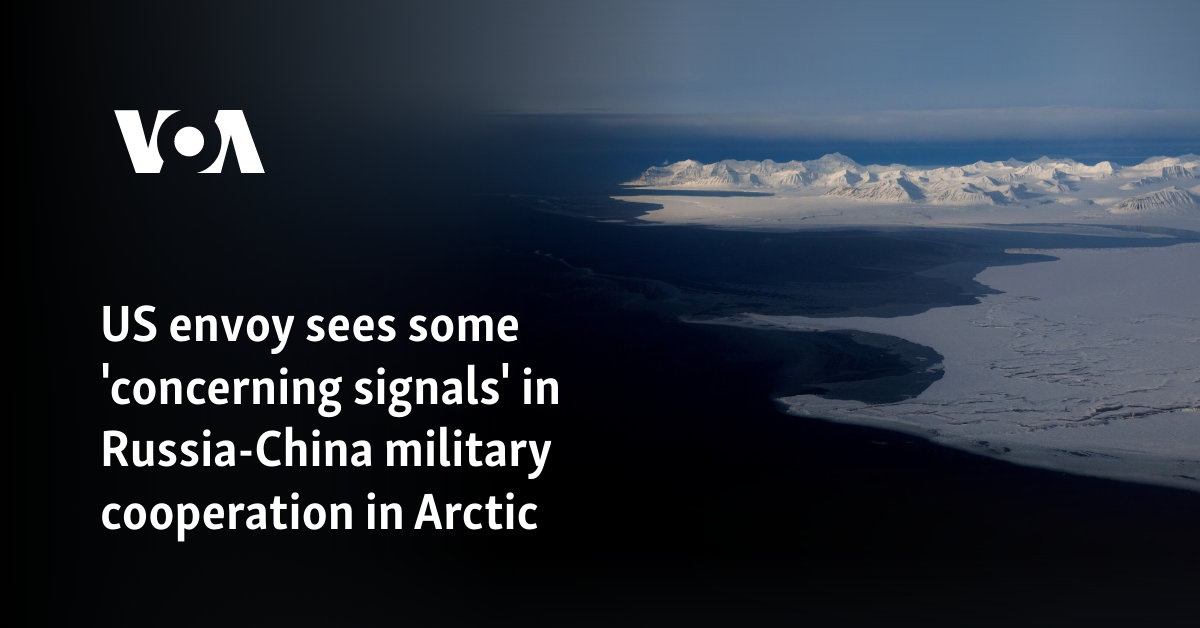
Only time will tell how things play out with China.
In the current Biden regime, the US-Russia tensions were sky-high.
And, Russia wanted to make a statement against the US support for Ukraine in the war.
The first deployment of a nuclear submarine to Cuba since the end of the Cold War has served not only as a message to the Biden administration of Moscow’s displeasure with continued U.S. support for Ukraine, but also of its increasing ability to stalk U.S. coastlines with stealth submersibles — a growing concern for the U.S. military, multiple officials familiar with the matter told McClatchy and the Miami Herald. Just last month, the head of the U.S. Northern Command warned Congress that Moscow could soon deploy 12 similarly advanced nuclear submarines split evenly between the Pacific and Atlantic, creating a “persistent conventional threat” to the United States. (Source: "U.S. military worries Russian submarines will stalk coasts" / Miami Herald)
The tide may be changing.
We will have a "new sheriff in town" - President Donald Trump. He and his team have promised to stop the war via negotiations and diplomacy.
If Trump were to de-escalate the Ukraine-Russia conflict, Arctic tensions could temporarily subside, but the underlying competition for resources, strategic dominance, and trade routes in the Arctic would remain unresolved. While diplomatic efforts might cool immediate flashpoints, the region's geopolitical significance ensures it remains a potential hotspot.
However, we still have European countries with a stake in the Arctic's future that could have independent agendas.
Here are three potential scenarios that could still - despite negotiation efforts by the Trump administration - start an Arctic conflict.
Scenario 1 - "Proxy War": A European power, emboldened by Arctic ambitions, moves to secure a disputed island or shipping route. Russia perceives this as encroachment and responds militarily, deploying submarines or intercepting NATO-aligned vessels. NATO, under pressure from European members, reinforces the region, leading to a tit-for-tat military buildup.
Scenario 2 - "Manufactured Crisis": The military-industrial complex encourages covert actions that create tensions—for instance, cyberattacks on Arctic infrastructure or incidents involving undersea cables. These events are attributed to Russia or China, compelling NATO to act preemptively, dragging the U.S. into a crisis.
Scenario 3 - "Environmental Catastrophe": A major Arctic environmental disaster (e.g., an oil spill or icebreaker accident) involving Russia, Norway, or China spirals into a blame game. This creates a flashpoint for militarized standoffs as nations jockey for control over damaged infrastructure and resources.
Now let us go back to our story.
A Russian frigate veers too close, colliding with a Norwegian patrol vessel. Casualties follow, and the waters turn cold with blame.
Moscow accuses NATO of crossing lines. NATO points to Russian recklessness. Tension thickens, coiling like a spring.
In the distance, a Chinese vessel lurks. It claims a “scientific mission.” But its antennas tell another story. Intelligence gathering. For Russia.
Suspicion hardens into certainty.
The United States acts. Sanctions strike swiftly—Russia and China feel the economic sting. Arctic industries buckle under the pressure.
Russia doesn’t flinch.
The Northern Fleet mobilizes. Silent submarines slip beneath the ice. Hypersonic missiles find their marks, locked and loaded.
NATO scrambles.
Norway and Canada call for reinforcements. NATO listens.
Britain sends Arctic-trained troops. Scotland’s bases surge with activity. The hum of preparation fills the air.
The Arctic isn’t a frozen frontier anymore.
It’s a battleground waiting to ignite.